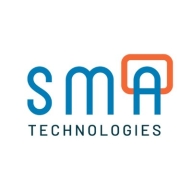

OpCon and JAMS are competitors in the automated scheduling and job management software category. JAMS appears to have the upper hand due to its extensive job sequencing flexibility and interactive agents that enhance user interaction in diverse business processes.
Features:OpCon provides robust seven-day auto-scheduling, seamless integration with Corelation KeyStone, and a self-service manager allowing staff to initiate complex tasks without IT interventions. JAMS offers extensive job sequencing flexibility, natural language scheduling, and various job execution methods across platforms.
Room for Improvement:OpCon's users face a steep learning curve and require a more intuitive interface for better usability, along with enhanced integration and streamlined notifications. JAMS could improve search functionality, exception handling, and seek to implement a fully web-based client interface and better source control features.
Ease of Deployment and Customer Service:OpCon is mainly deployed on-premises, with its customer service being highly responsive and technically adept. JAMS users deploy across on-premises and cloud setups, yet express a need for faster ticket resolution and improved technical support methods.
Pricing and ROI:OpCon's pricing is considered high, but it offers significant financial returns through operational efficiency. JAMS provides competitive pricing with strong ROI attributed to reduced manual processing costs, but users caution about potential cost increases from licensing model changes.
| Product | Market Share (%) |
|---|---|
| JAMS | 2.1% |
| OpCon | 1.7% |
| Other | 96.2% |


| Company Size | Count |
|---|---|
| Small Business | 11 |
| Midsize Enterprise | 7 |
| Large Enterprise | 17 |
| Company Size | Count |
|---|---|
| Small Business | 16 |
| Midsize Enterprise | 29 |
| Large Enterprise | 19 |
JAMS offers efficient automation and scheduling with strong capabilities in planning, dependency management, and multi-platform support. Its intuitive interface and robust tools assist in managing complex workflows for enhanced resource allocation.
JAMS stands out for its blend of automation and scheduling capabilities, making it suitable for handling complex workflows across platforms. Its features such as batch scheduling, natural language scheduling, and interactive agents promote seamless integration with other tools like PowerShell. The focus on metrics and notifications ensures users are informed about operational efficiency enhancements. While JAMS is effective in many areas, users report a need for improved simulation for termination processes and a more intuitive client setup. They see potential in enhanced search functions, better exception handling, and greater transparency in custom execution. The current setup challenges like disappearing options and mobile accessibility can affect user satisfaction. Including a fully web-based client and improving documentation could add value.
What are JAMS' key features?
What benefits should users consider?
Organizations using JAMS for workflow and batch job automation leverage its capabilities for SSIS, SQL procedures, and Python scripts. JAMS supports file automation and managed file transfers across environments like AWS and Azure. Users employ JAMS for data management, reporting, and integration tasks, including handling holiday-aware scheduling for improved task coordination.
OpCon enhances automation with features like auto-scheduling and Corelation KeyStone integration, empowering users with self-service capabilities. Its intuitive interface and flexibility boost productivity, providing reliable automation and efficient file transfers.
OpCon is a powerful automation platform known for streamlining operations through features like auto-scheduling and robust integration capabilities. It facilitates seamless automation, allowing users to execute tasks without direct environment access and simplifies job dependencies. Users benefit from self-service capabilities, which enable easy task execution by non-IT staff, reducing errors and human intervention. With its modern interface, OpCon supports efficient file transfers and integrates effectively with multiple systems, enhancing productivity. While offering significant scalability, OpCon users suggest improvements in web functionality, script-writing, and graphical displays, along with enhancements in user authorization and notification systems. There is also a need for better template management, clearer logging, improved mobile accessibility, and expanded training resources.
What are OpCon's Key Features?OpCon is widely used in industries like financial services, where automation and scheduling tasks are critical. Financial institutions rely on OpCon for core processing tasks, including reporting, automated workflows, and vendor file exchanges. The platform handles high volumes of jobs across platforms, ensuring efficient operations and reducing reliance on manual processes.
We monitor all Workload Automation reviews to prevent fraudulent reviews and keep review quality high. We do not post reviews by company employees or direct competitors. We validate each review for authenticity via cross-reference with LinkedIn, and personal follow-up with the reviewer when necessary.